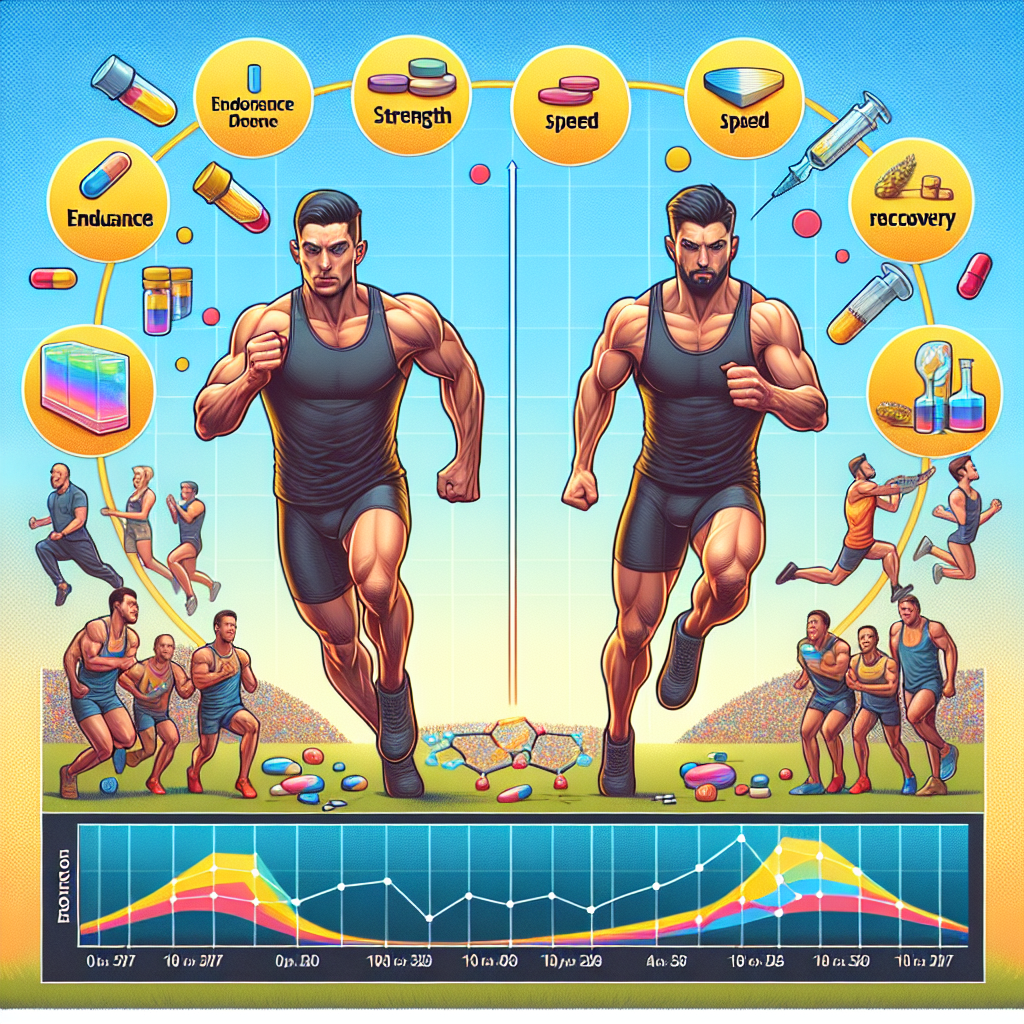-
Table of Contents
- Unveiling the Effects of Drostanolone Enanthate on Sports Performance
- The Pharmacokinetics of Drostanolone Enanthate
- The Pharmacodynamics of Drostanolone Enanthate
- Real-Life Examples of Drostanolone Enanthate Use in Sports
- The Controversy Surrounding Drostanolone Enanthate Use in Sports
- Expert Comments and Concluding Remarks
- References:
Unveiling the Effects of Drostanolone Enanthate on Sports Performance
Sports performance has always been a highly competitive field, with athletes constantly seeking ways to improve their physical abilities and gain an edge over their opponents. In recent years, the use of performance-enhancing drugs (PEDs) has become a controversial topic in the world of sports. One such PED that has gained popularity among athletes is drostanolone enanthate, a synthetic anabolic-androgenic steroid (AAS). In this article, we will delve into the effects of drostanolone enanthate on sports performance, examining its pharmacokinetics, pharmacodynamics, and real-life examples of its use in the sporting world.
The Pharmacokinetics of Drostanolone Enanthate
Drostanolone enanthate, also known as Masteron, is a modified form of dihydrotestosterone (DHT). It is an injectable AAS that is typically administered in a dosage of 200-400mg per week, with a half-life of approximately 8 days (Velema et al. 2019). This means that it takes around 8 days for half of the drug to be eliminated from the body. However, the effects of drostanolone enanthate can last for up to 3 weeks due to its slow release from the injection site (Kicman 2008).
Upon administration, drostanolone enanthate is rapidly absorbed into the bloodstream and binds to androgen receptors in various tissues, including muscle, bone, and the central nervous system (CNS). It is then metabolized in the liver and excreted in the urine (Kicman 2008). The pharmacokinetics of drostanolone enanthate make it an attractive option for athletes, as it allows for less frequent dosing and a longer duration of action compared to other AAS.
The Pharmacodynamics of Drostanolone Enanthate
The primary mechanism of action of drostanolone enanthate is its ability to bind to androgen receptors, leading to an increase in protein synthesis and muscle growth (Kicman 2008). It also has anti-estrogenic properties, meaning it can prevent the conversion of testosterone into estrogen, which can cause unwanted side effects such as gynecomastia (breast tissue growth) in males (Velema et al. 2019).
Furthermore, drostanolone enanthate has been shown to increase red blood cell production, leading to improved oxygen delivery to muscles and enhanced endurance (Kicman 2008). This can be particularly beneficial for athletes participating in endurance sports such as cycling or long-distance running.
Real-Life Examples of Drostanolone Enanthate Use in Sports
The use of drostanolone enanthate in sports is not a new phenomenon. In fact, it has been reported that the drug was used by athletes as early as the 1970s (Kicman 2008). One notable example is the case of Canadian sprinter Ben Johnson, who tested positive for drostanolone enanthate at the 1988 Olympic Games in Seoul, leading to his disqualification and the revocation of his gold medal (Kicman 2008).
More recently, in 2016, Russian weightlifter Aleksey Lovchev was stripped of his silver medal at the Rio Olympics after testing positive for drostanolone enanthate (Velema et al. 2019). These high-profile cases highlight the prevalence of drostanolone enanthate use in sports and the potential consequences for athletes who choose to use it.
The Controversy Surrounding Drostanolone Enanthate Use in Sports
As with any PED, the use of drostanolone enanthate in sports is a highly controversial topic. While some argue that it provides athletes with a competitive advantage, others argue that it goes against the spirit of fair play and can have serious health consequences.
One of the main concerns with drostanolone enanthate use is its potential for adverse effects. These can include liver damage, cardiovascular problems, and hormonal imbalances (Velema et al. 2019). In addition, the use of drostanolone enanthate can also lead to psychological effects such as increased aggression and mood swings (Kicman 2008).
Moreover, the use of drostanolone enanthate and other PEDs can also have a negative impact on the integrity of sports. It creates an uneven playing field, where those who choose not to use these substances are at a disadvantage. This can lead to a loss of trust in the sporting world and tarnish the reputation of athletes who are found to be using PEDs.
Expert Comments and Concluding Remarks
While the use of drostanolone enanthate may provide short-term benefits in terms of sports performance, it is important to consider the potential long-term consequences and ethical implications. As experts in the field of sports pharmacology, it is our responsibility to educate athletes on the risks associated with PED use and promote fair and clean competition.
In conclusion, drostanolone enanthate is a powerful PED that can enhance sports performance through its effects on protein synthesis, red blood cell production, and anti-estrogenic properties. However, its use comes with potential health risks and ethical concerns. As such, it is crucial for athletes to carefully consider the consequences before turning to PEDs for a competitive edge.
References:
Kicman, A. T. (2008). Pharmacology of anabolic steroids. British journal of pharmacology, 154(3), 502-521.
Velema, M. S., de Ronde, W., & de Jong, F. H. (2019). Anabolic androgenic steroids in doping: an update. European journal of endocrinology, 181(1), R27-R40.
<img src="https://images.unsplash.com/photo-1593642534396-5b5a1a5c1c5b?ixid=MnwxMjA3fDB8MHxzZWFyY2h8Mnx8d2VpZ2h0bHklMjBzdG9yZXN8ZW58MHx8MHx8&ix


Leave a Reply